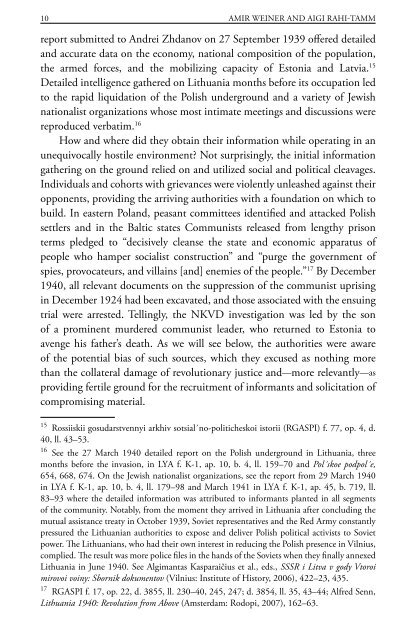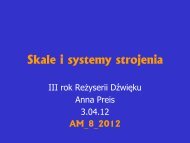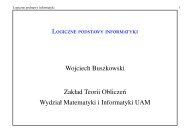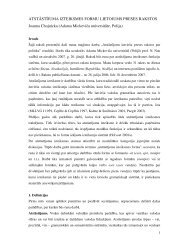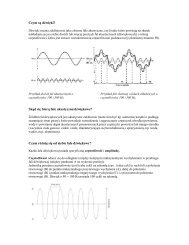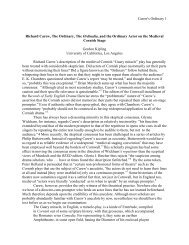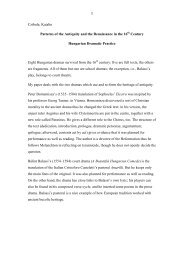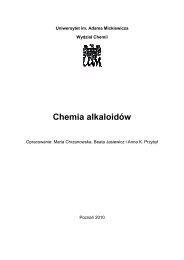Amir Weiner Getting to Know You
Amir Weiner Getting to Know You
Amir Weiner Getting to Know You
Create successful ePaper yourself
Turn your PDF publications into a flip-book with our unique Google optimized e-Paper software.
10 AMIR WEINER AND AIGI RAHI-TAMM<br />
report submitted <strong>to</strong> Andrei Zhdanov on 27 September 1939 offered detailed<br />
and accurate data on the economy, national composition of the population,<br />
the armed forces, and the mobilizing capacity of Es<strong>to</strong>nia and Latvia. 15<br />
Detailed intelligence gathered on Lithuania months before its occupation led<br />
<strong>to</strong> the rapid liquidation of the Polish underground and a variety of Jewish<br />
nationalist organizations whose most intimate meetings and discussions were<br />
reproduced verbatim. 16<br />
How and where did they obtain their information while operating in an<br />
unequivocally hostile environment? Not surprisingly, the initial information<br />
gathering on the ground relied on and utilized social and political cleavages.<br />
Individuals and cohorts with grievances were violently unleashed against their<br />
opponents, providing the arriving authorities with a foundation on which <strong>to</strong><br />
build. In eastern Poland, peasant committees identified and attacked Polish<br />
settlers and in the Baltic states Communists released from lengthy prison<br />
terms pledged <strong>to</strong> “decisively cleanse the state and economic apparatus of<br />
people who hamper socialist construction” and “purge the government of<br />
spies, provocateurs, and villains [and] enemies of the people.” 17 By December<br />
1940, all relevant documents on the suppression of the communist uprising<br />
in December 1924 had been excavated, and those associated with the ensuing<br />
trial were arrested. Tellingly, the NKVD investigation was led by the son<br />
of a prominent murdered communist leader, who returned <strong>to</strong> Es<strong>to</strong>nia <strong>to</strong><br />
avenge his father’s death. As we will see below, the authorities were aware<br />
of the potential bias of such sources, which they excused as nothing more<br />
than the collateral damage of revolutionary justice and—more relevantly—as<br />
providing fertile ground for the recruitment of informants and solicitation of<br />
compromising material.<br />
15 Rossiiskii gosudarstvennyi arkhiv sotsial´no-politicheskoi is<strong>to</strong>rii (RGASPI) f. 77, op. 4, d.<br />
40, ll. 43–53.<br />
16 See the 27 March 1940 detailed report on the Polish underground in Lithuania, three<br />
months before the invasion, in LYA f. K-1, ap. 10, b. 4, ll. 159–70 and Pol´skoe podpol´e,<br />
654, 668, 674. On the Jewish nationalist organizations, see the report from 29 March 1940<br />
in LYA f. K-1, ap. 10, b. 4, ll. 179–98 and March 1941 in LYA f. K-1, ap. 45, b. 719, ll.<br />
83–93 where the detailed information was attributed <strong>to</strong> informants planted in all segments<br />
of the community. Notably, from the moment they arrived in Lithuania after concluding the<br />
mutual assistance treaty in Oc<strong>to</strong>ber 1939, Soviet representatives and the Red Army constantly<br />
pressured the Lithuanian authorities <strong>to</strong> expose and deliver Polish political activists <strong>to</strong> Soviet<br />
power. The Lithuanians, who had their own interest in reducing the Polish presence in Vilnius,<br />
complied. The result was more police files in the hands of the Soviets when they finally annexed<br />
Lithuania in June 1940. See Algimantas Kasparaičius et al., eds., SSSR i Litva v gody V<strong>to</strong>roi<br />
mirovoi voiny: Sbornik dokumen<strong>to</strong>v (Vilnius: Institute of His<strong>to</strong>ry, 2006), 422–23, 435.<br />
17 RGASPI f. 17, op. 22, d. 3855, ll. 230–40, 245, 247; d. 3854, ll. 35, 43–44; Alfred Senn,<br />
Lithuania 1940: Revolution from Above (Amsterdam: Rodopi, 2007), 162–63.


